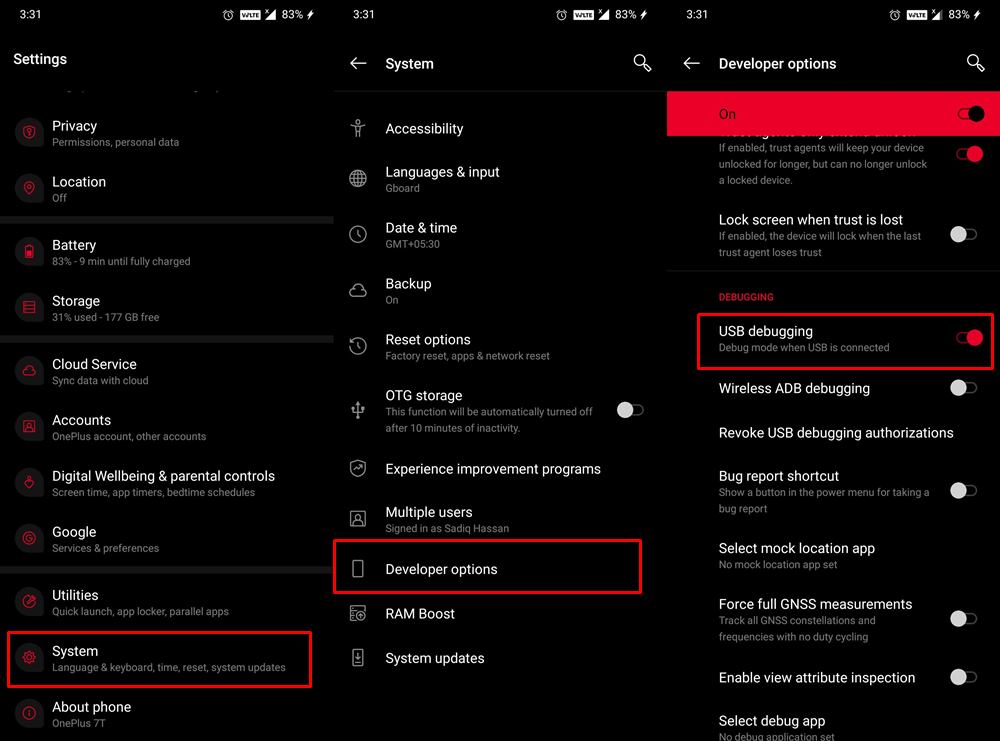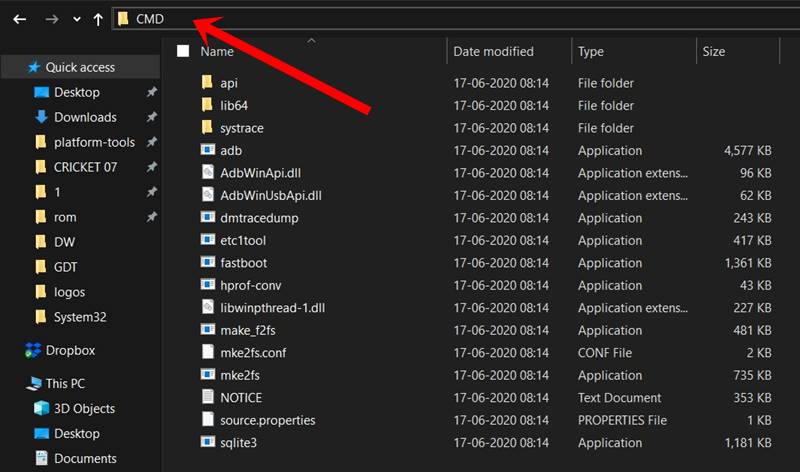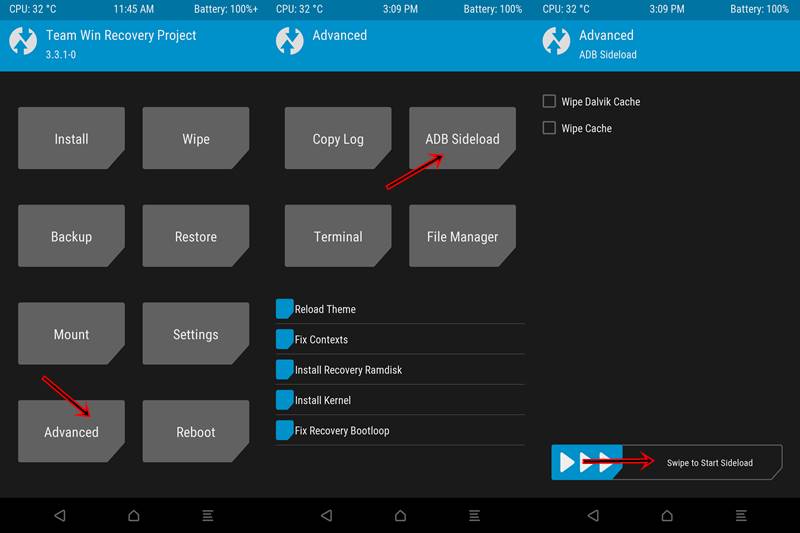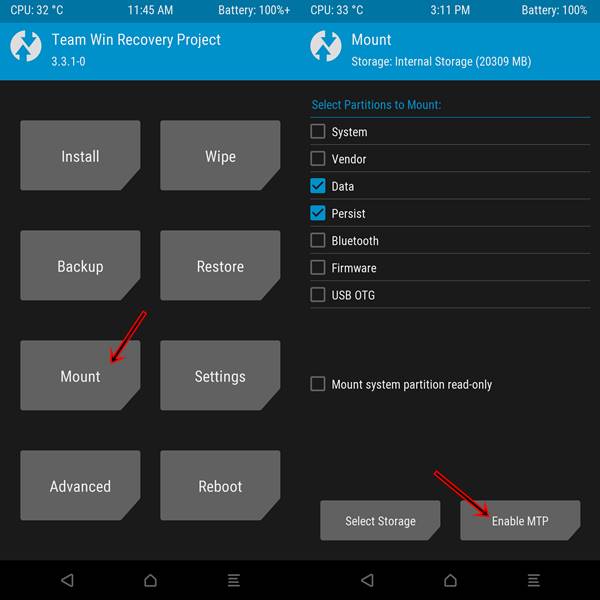Of the many important features that it includes, three will be discussed here- the “ADB Sideload”, “ADB Push” and the “Mount” option. Whereas ADB Push and the Mount Option perform similar functions, ADB Sideload does a more useful functionality. Let’s have a look at each one of them in detail. But first, make sure to carry out all the steps mentioned in the “Prerequisites” as well as the “TWRP Prerequisites” sections below.
How to Fix TWRP Error 70 [With Screenshots]How to Fix TWRP Error 20 GApps after flashing LineageOSFix TWRP Error 7 (While Flashing Custom ROM via TWRP)How to Boot into Recovery (TWRP/Stock) from Fastboot Mode
Prerequisites
To begin with, you will have to enable USB Debugging on your device. This is needed so that your device gets recognized by your PC in ADB Mode. Hence head over to “Settings” > About Phone > Tap on “Build Number” 7 Times > Go back to “Settings” > System > Advanced > “Enable USB debugging”. Next up, download and install ADB and Fastboot Platform Tools on your PC. This will provide the necessary ADB and Fastboot binaries.Head over to the platform-tools folder (it is the folder where you have installed Android SDK just now). Type in CMD in the address bar of the folder and hit Enter. This will launch the Command Prompt. Also transfer the ZIP file, that you wish to push or sideload, to this “platform-tools” folder.
TWRP Prerequisites
To begin with, make sure TWRP recovery is installed on your device. If not, then refer to this guide on How to Install TWRP Recovery on any Android Device. Or if you just wish to boot your device for one-time install (temporary installation), then refer to our guide: How to Boot into Recovery (TWRP/Stock) from Fastboot Mode.Boot your device to the TWRP Recovery, either via the hardware key combination or by entering the below code:adb reboot recoveryWith that, it is now time to start the guide on how to transfer or install files via TWRP Recovery.
The ADB Sideload Feature of TWRP
Hands down my favorite of the three. Using Sideload, you could directly install any zip file right from the command line. No need to transfer the file to the device’s internal storage, navigate for the required file, and then flash it. The ADB Sideload feature does it all for you. It takes the file from the PC and automatically installs it on your Android device. This feature is extremely beneficial when you have wiped your Internal Storage and about to flash a new ROM. Rather than copy-paste the entire ROM to the device, you could directly flash it from the PC itself. Let us have a look at how this could be achieved. Just keep in mind that you could only install zip files via it. But most of the time that is the only file format we are dealing with, right?
How to Update Magisk ZIP and Magisk Manager (without TWRP)Disable DM-Verity or Android Verified Boot without TWRPFix Magisk Module Bootloop without TWRP RecoveryHow to Root Android Devices Without TWRP Recovery
How to Use the ADB Sideload Feature
Given here are the quick, short, and up to the point instructions related to ADB Sideload. If you are looking for detailed and comprehensive coverage on this topic, then please refer to our standalone guide on How to Use ADB Sideload in Android [Stock and TWRP Recovery].
The “Mount” Feature of TWRP Recovery
Let’s move onto the next section of the guide on how to transfer or install files via TWRP Recovery. Suppose you have bricked your device and recovery is the thing you are able to access. [Even if you could only access the fastboot mode, then just type fastboot boot recovery-name.img to boot to TWRP Recovery]. In such cases, obviously, you won’t be able to access the “ADB Push” feature. And if you want to try out a non-zip file, then even the “ADB Sideload” won’t work. This is where the Mount feature of TWRP comes in handy. Just enable this feature and transfer as many files as you want. Also, it is not restricted to any particular file type.
How to Access the “Mount” Feature
Well, this has always been my go-to method because you don’t need to leave the TWRP Recovery to carry out the file transfer. However, this only works for devices whose TWRP supports data decryption. If you are seeing 0MB as internal storage or the name of the files are shown as a random string of characters, it means TWRP is unable to decrypt the data. However, if your recovery is able to display all the file names in their original format, then this should be your go-to method. So with that in mind, here are the steps to transfer and install files via the Mount feature of TWRP Recovery.
Detailed Steps to Fix adb is not recognized ErrorHow to Fix Unauthorized Device with ADB Commands [3 methods]Fix Android stuck in Recovery Mode: No Command screenHow to Install Split APKs (APKM) on any Android Device
Transferring Files via USB OTG or Pen Drive
If you have a USB OTG/Pendrive, then you may directly flash files from it. To do so, please refer to our detailed guide: How to use USB OTG or Pen Drive to Flash File via TWRP Recovery. If you are looking for quick and short instructions, then here they are: Before rounding off, I thought of making you aware of the ADB Push feature. This feature does not install the files on your device. Rather it is used to transfer files from the PC to your device. The obvious question then arises- what does it hold for me? Well, plenty of things. Although it may seem like a small code, it has many advantages. First off, as opposed to the ADB Sideload feature, this feature does not need any custom recovery installed on your device. Which means you don’t need a rooted device. This, in turn, signifies that it will work very well on devices with a locked bootloader. Also, this feature is not just restricted to the ZIP file. You may transfer any file type you like. That’s another big plus for this feature. [Loving this guide? Make sure to check out another similar one: List of Useful ADB and Fastboot Commands]
How to Execute the ADB Push Process:
Final Thoughts
So this was a comprehensive guide on how to transfer or install files via TWRP Recovery. All the three features mentioned above are extremely beneficial and time saver. Just use it as mentioned in the circumstances. Also, if you didn’t understand any part of the guide, do let me know. I’ll get back to you with a much simpler and more detailed explanation, if possible. Give your feedback in the comments section below. Happy Installing!
How to Install OxygenOS OTA on Rooted OnePlus devicesHow to Extract Stock Boot.img from OnePlus OxygenOS Stock ROMFix Android stuck in Recovery Mode: No Command screenHow To Unlock Bootloader of OnePlus 8, 8 Pro, and 8T
About Chief Editor






